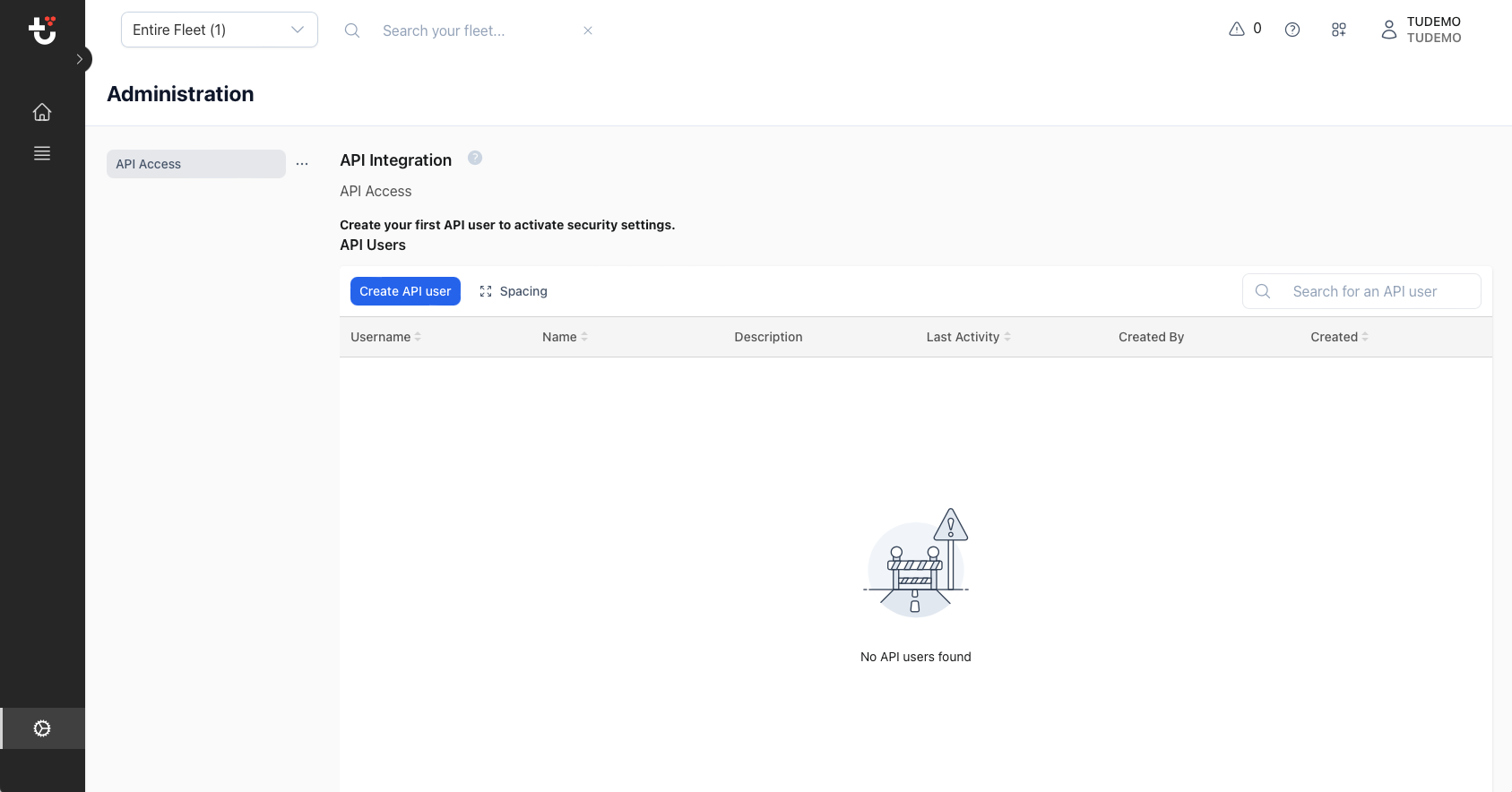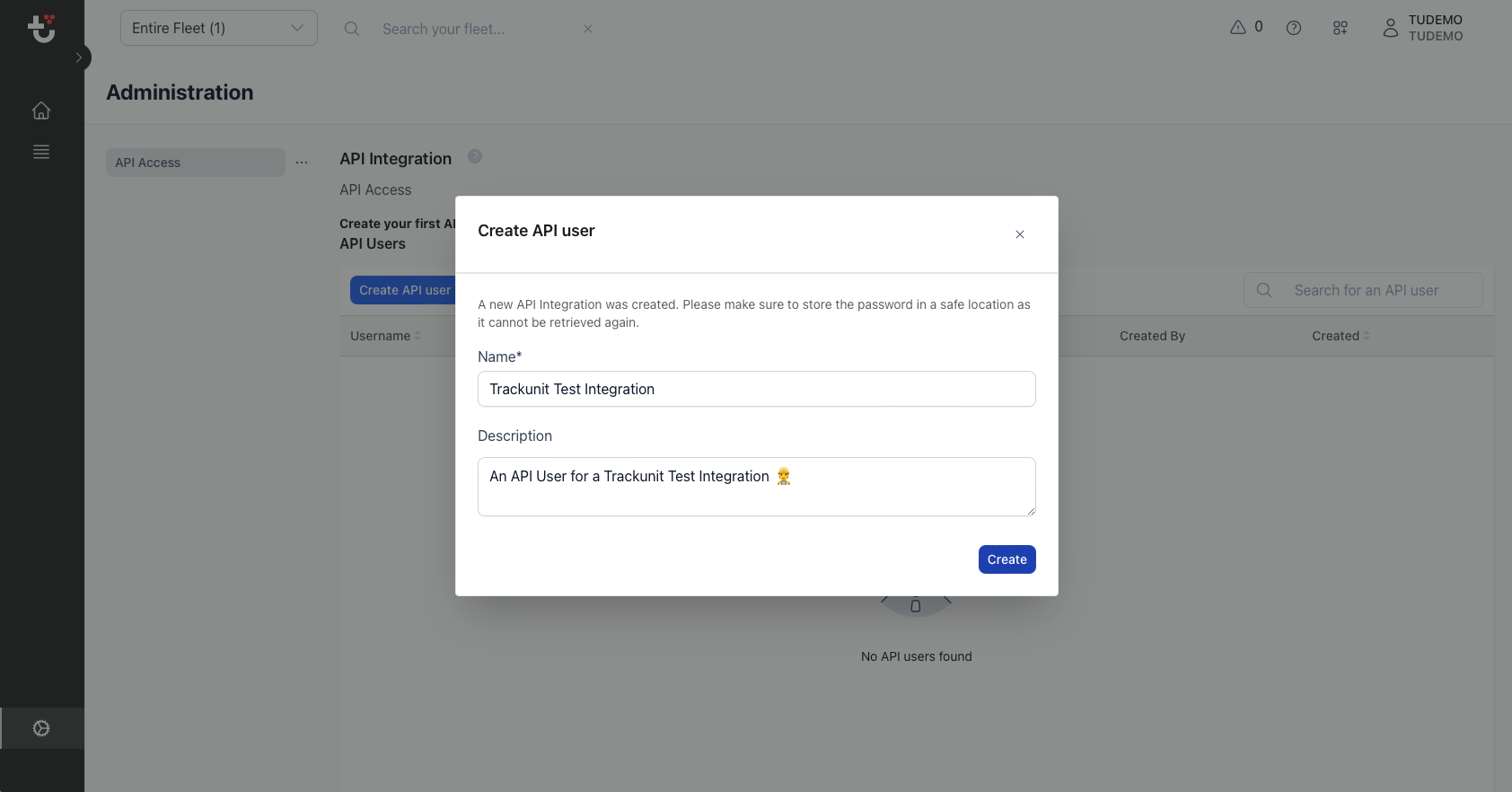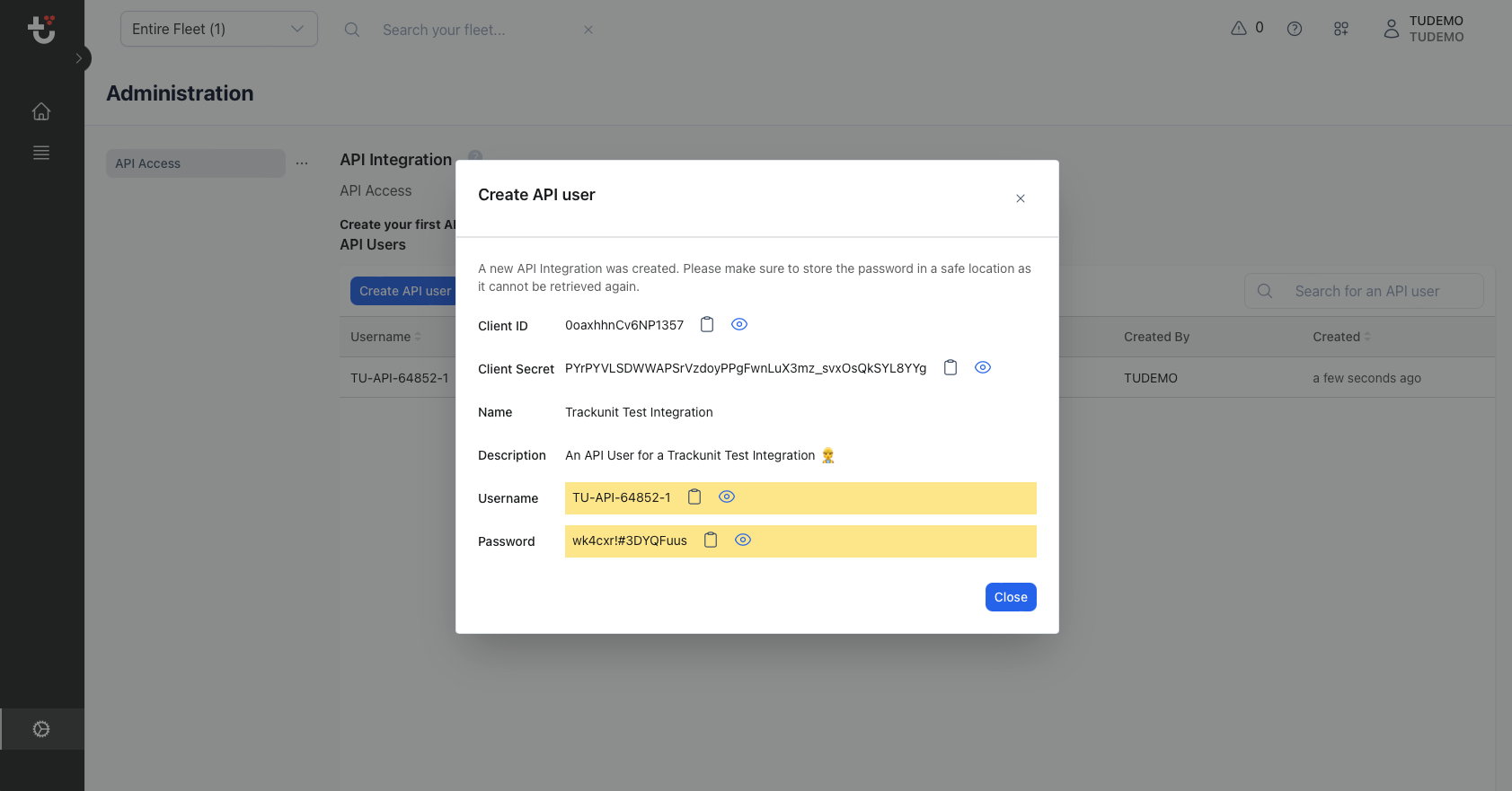Scale construction with the Iris APIs. Connect Trackunit to other systems by building integrations that exchange data and info. Our Iris APIs offers a wide range of operations across assets, fleets, alerts, sites, and so much more.
IRIS APIs use the OAuth 2.0 protocol for authentication and authorization. IRIS APIs supports OAuth 2.0's Resource Owner Password Flow.
To begin, obtain OAuth 2.0 client credentials from the Manager application. Then your client application requests an access token from the IRIS Authorization Server, extracts a token from the response, and sends the token to the IRIS API that you want to access.
This page gives an overview of how to use OAuth 2.0's Resource Owner Password Flow.
Basic Steps
All applications follow a basic pattern when accessing IRIS API using OAuth 2.0. At a high level, you follow four steps:
1. Obtain OAuth 2.0 credentials from the Manager application.
Visit the Manager application to create an API User and obtain OAuth 2.0 credentials such as a username, password, client ID and client secret that are known to both Trackunit and your application.
Admin user privilegesAPI Users will act as the admin user. Only the admin user can access the "API Access"-page to create API Users and obtain credentials.
Find the "API Access" page under Administration → API Access.

Create a new API User by clicking "Create API User".

Attach a name and description to the API User for easy identification.

Capture the username and password of created user along with the "Client ID" and "Client Secret".
PasswordRemember to save the password. The password will only be visible this one time.

2. Obtain an access token from the IRIS Authorization Server.
Before your application can access private data using a IRIS API, it must obtain an access token that grants access to that API. A single access token can grant varying degrees of access to multiple APIs based on subscription package and add-ons.
Authenticate against the IRIS Authorization Server using the OAuth 2.0 credentials from step 1.
curl --location --request POST 'https://auth.trackunit.com/token' \
--header 'Authorization: Basic <<base64 encoded client_id:client_secret>>' \
--header 'Content-Type: application/x-www-form-urlencoded' \
--data-urlencode 'grant_type=password' \
--data-urlencode 'username=<<username>>' \
--data-urlencode 'password=<<password>>' \
--data-urlencode 'scope=api'
Authorization HeaderApplications has to supply client_id and client_secret through basic authentication. Base64 encode <<client_id>>:<< client_secret>> and include it in the 'Authorization' header e.g. 'Authorization: Basic "<<base64 encoded client_id:client_secret>>"'
If the user grants at least one permission, the IRIS Authorization Server sends your application an access token. If the user does not grant the permission, the server returns an error.
A granted permission response from IRIS Authorization Server will be returned as:
{
"token_type": "Bearer",
"expires_in": 3600,
"access_token": "<<access_token>>",
"scope": "api"
}3. Send the access token to an API.
After an application obtains an access token, it sends the token to a IRIS API in an HTTP Authorization request header.
4. Refresh the access token, if necessary.
Access tokens have limited lifetimes. If your application needs access to a IRIS API beyond the lifetime of a single access token, it can obtain a new token from the IRIS Authorization Server by calling the token endpoint again.
Refreshing an access token using a refresh token
To enable this functionality, include the offline_access scope when requesting an access token. The IRIS
Authorization Server will return a refresh token that can be used to obtain a new access token.
curl --location --request POST 'https://auth.trackunit.com/token' \
--header 'Authorization: Basic <<base64 encoded client_id:client_secret>>' \
--header 'Content-Type: application/x-www-form-urlencoded' \
--data-urlencode 'grant_type=password' \
--data-urlencode 'username=<<username>>' \
--data-urlencode 'password=<<password>>' \
--data-urlencode 'scope=api offline_access'This request will return a refresh token along with the access token.
{
"token_type": "Bearer",
"expires_in": 3600,
"access_token": "<<access_token>>",
"refresh_token": "<<refresh_token>>",
"scope": "api offline_access"
}You can use the refresh token to obtain a new access token and a new refresh token.
curl --location --request POST 'https://auth.trackunit.com/token' \
--header 'Authorization: Basic <<base64 encoded client_id:client_secret>>' \
--header 'Content-Type: application/x-www-form-urlencoded' \
--data-urlencode 'grant_type=refresh_token' \
--data-urlencode 'refresh_token=<<refresh_token>>'